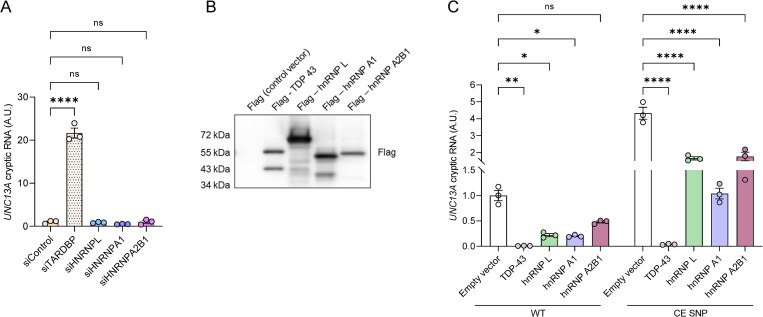Fig 5. hnRNP L, hnRNP A1, and hnRNP A2B1 can repress UNC13A cryptic exon splicing but TDP-43 down-regulation is critical to observe UNC13A cryptic RNA accumulation.
(A) WT UNC13A minigene was expressed in WT HeLa cells treated with either control (siControl) or siRNAs against TARDBP (siTARDBP), HNRNPL (siHNRPL), HNRNPA1 (siHNRNPA1), or HNRNPA2B1 (siHNRNPA2B1). RNA was extracted, and RT-qPCR was performed to assess the expression levels of UNC13A cryptic (A), TARDBP (S7A Fig), HNRNPL (S7B Fig), HNRNPA1 (S7C Fig), or HNRNPA2B1 (S7D Fig) RNA. (B, C) Flag-tagged TDP-43, hnRNP L, hnRNP A1, and hnRNP A2B1 were expressed in TARDBP KO HeLa cells transfected with UNC13A WT or CE SNP minigenes to evaluate the ability of other hnRNPs to repress UNC13A cryptic exon inclusion by RT-qPCR. A representative immunoblot confirming the expression of each Flag-tagged plasmid using a Flag antibody is shown in B. Blot provided in Supporting information (S1 Raw images). All graphs represent mean ± SEM of UNC13A cryptic RNA levels of 3 independent experiments. Statistical differences were assessed by one-way followed by Tukey’s multiple comparisons test (A) or two-way (C) ANOVA (ns: not significant, *P < 0.05, **P < 0.005, ****P < 0.0001). Data used to generate graphs can be found in S3 Table. CE, cryptic exon; hnRNP, heterogeneous nuclear ribonucleoprotein; SEM, standard error of mean; siRNA, small interfering RNA; SNP, single-nucleotide polymorphism;TDP-43, TAR DNA-binding protein-43.

